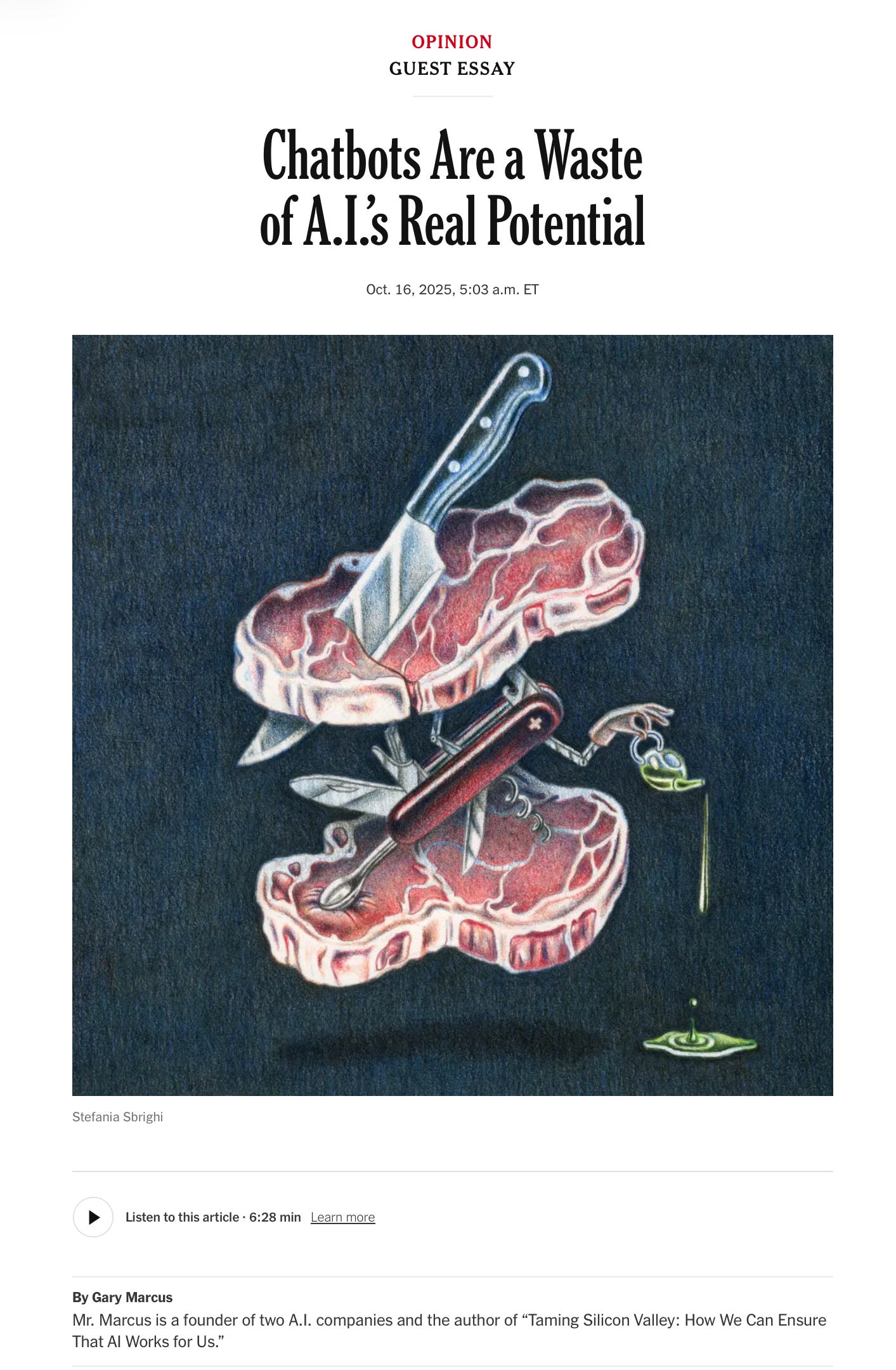
Examining the Pursuit of AGI: A Cautionary Perspective
In a thought-provoking Op-Ed published in The New York Times, AI expert Gary Marcus addresses the complex and often contentious debate surrounding Artificial General Intelligence (AGI). Marcus, who holds the belief that AGI could fundamentally transform the world, also argues that the current trajectory of AI development, particularly through large language models (LLMs), may not be the appropriate path forward, either morally or technically.
The Challenges of Current AI Technologies
Marcus highlights significant challenges associated with LLMs, which have consistently shown a tendency for hallucinations and errors. These issues may explain why the anticipated surge in profits and productivity from generative AI has not materialized as many in the tech industry had hoped. A recent study conducted by the Massachusetts Institute of Technology's NANDA Initiative revealed that a staggering 95 percent of companies engaging in AI pilot studies reported minimal or no return on their investment.
Financial Implications
Further emphasizing the urgency of reevaluating current strategies, Marcus points to a financial analysis predicting an estimated shortfall of $800 billion in revenue for AI companies by the end of 2030. This figure raises serious questions about the sustainability of the current approach to AI development.
A Call for Specialized Solutions
Marcus suggests that to harness the true strengths of AI, the tech industry must shift its focus from broad, general-purpose tools to more narrow, specialized AI solutions tailored to specific issues. He critiques the prevailing trend among major technology companies, likening it to “throwing general-purpose AI spaghetti at the wall and hoping that nothing truly terrible sticks.”
Echoing sentiments from fellow AI pioneer Yoshua Bengio, Marcus argues that pursuing advanced generalized AI systems capable of greater autonomy does not necessarily lead to beneficial outcomes. Instead, a more targeted approach could yield more effective and reliable AI applications.
Conclusion
As the discourse surrounding AGI continues to evolve, Marcus’s insights serve as a valuable reminder of the complexities and potential pitfalls that lie ahead. The path to AGI may require a reevaluation of our current methodologies and a commitment to developing AI technologies that are not only innovative but also responsible and effective.
Rocket Commentary
Gary Marcus raises critical points about the limitations of current large language models (LLMs) and their implications for the future of Artificial General Intelligence (AGI). His concerns about hallucinations and inaccuracies are not just technical flaws; they reflect a broader ethical dilemma in AI development. As we strive for AGI, it is imperative that we prioritize systems that are not only effective but also ethical and transparent. The industry's current focus on rapid deployment over responsible innovation risks alienating users and stifling trust. By addressing these challenges head-on, we can harness AI's transformative potential while ensuring it remains accessible and beneficial for all. The path forward must balance ambition with accountability, positioning AI as a tool for positive change rather than a source of uncertainty.
Read the Original Article
This summary was created from the original article. Click below to read the full story from the source.
Read Original Article